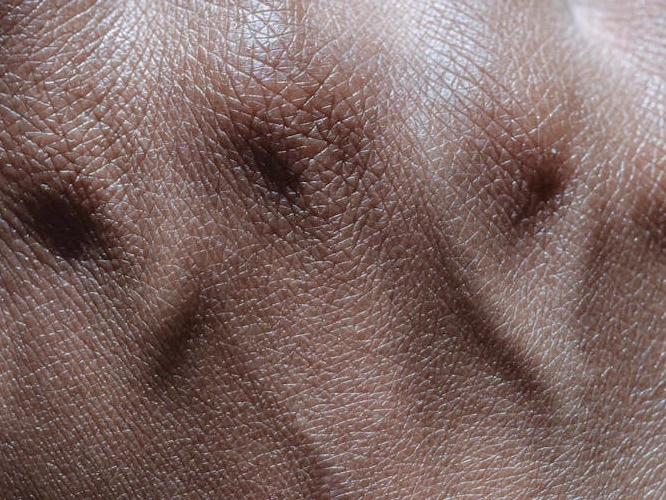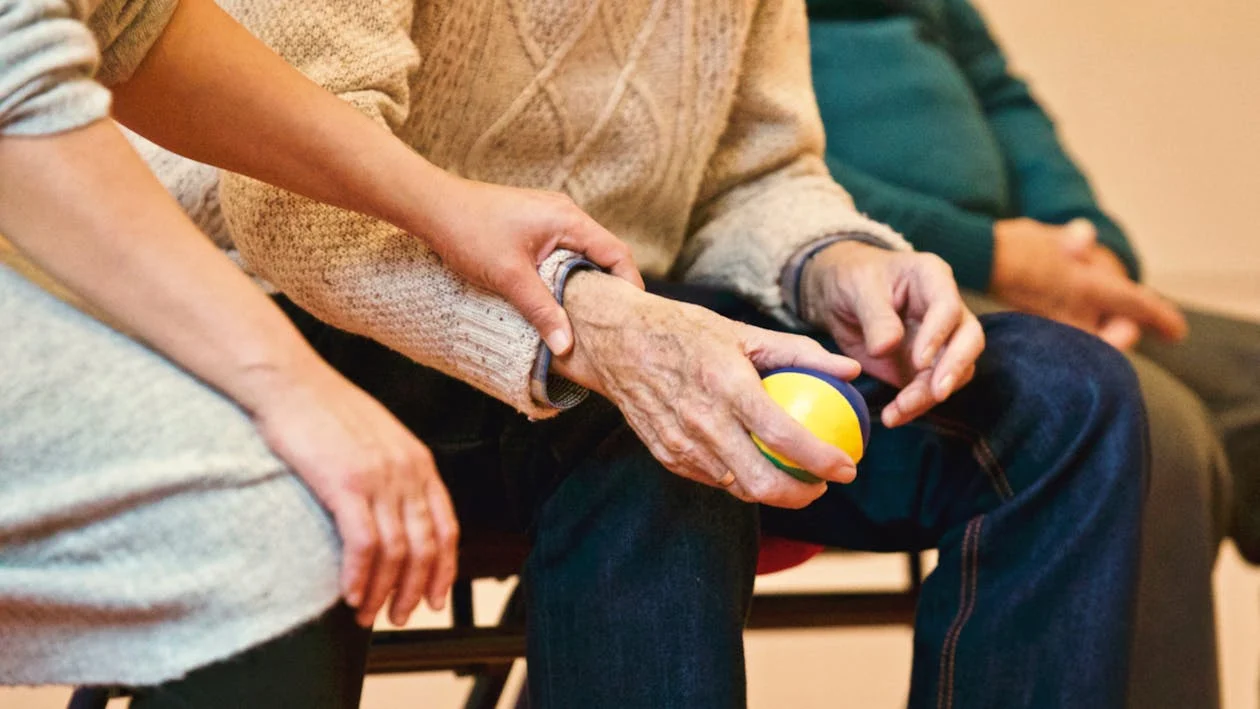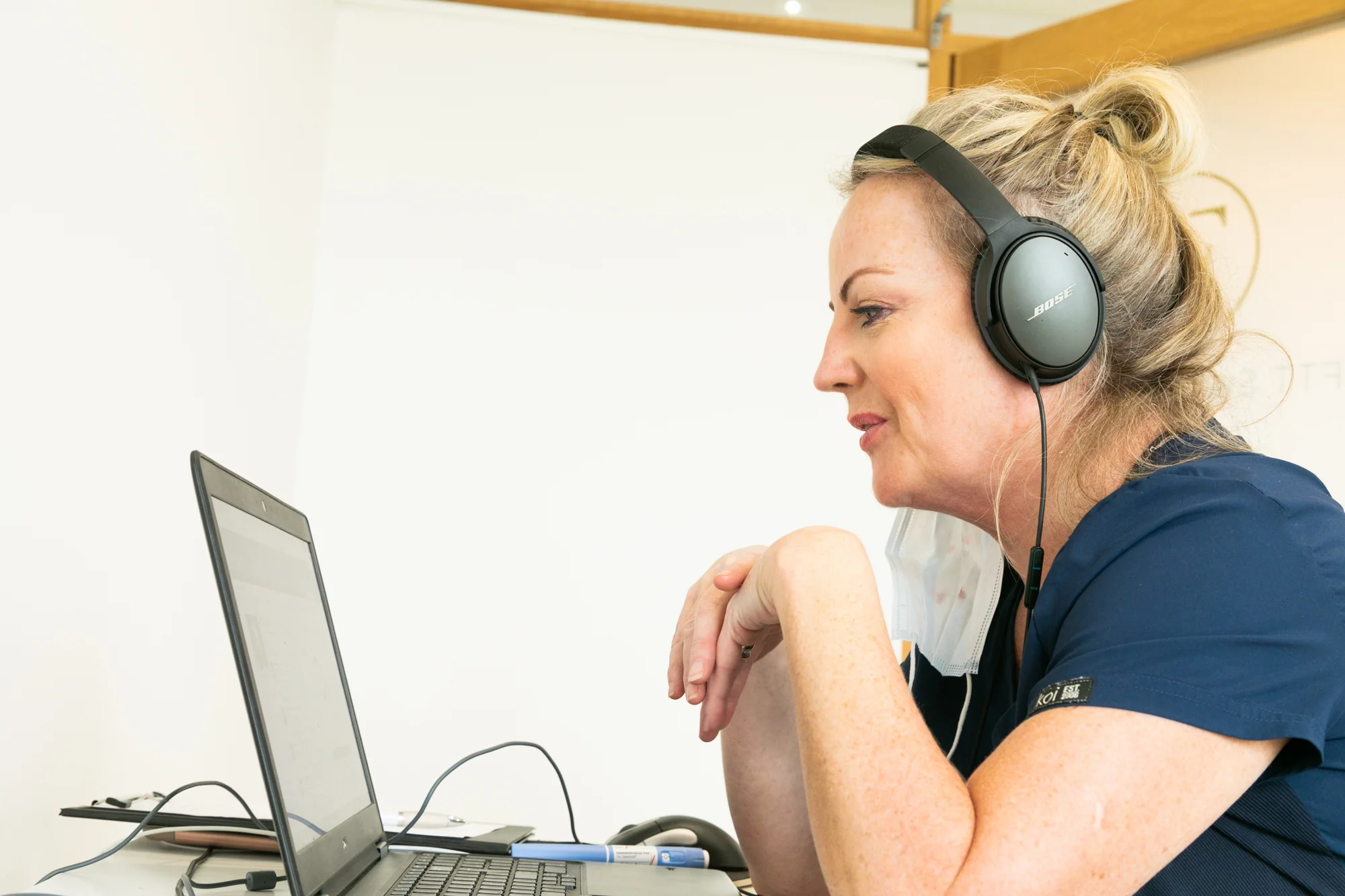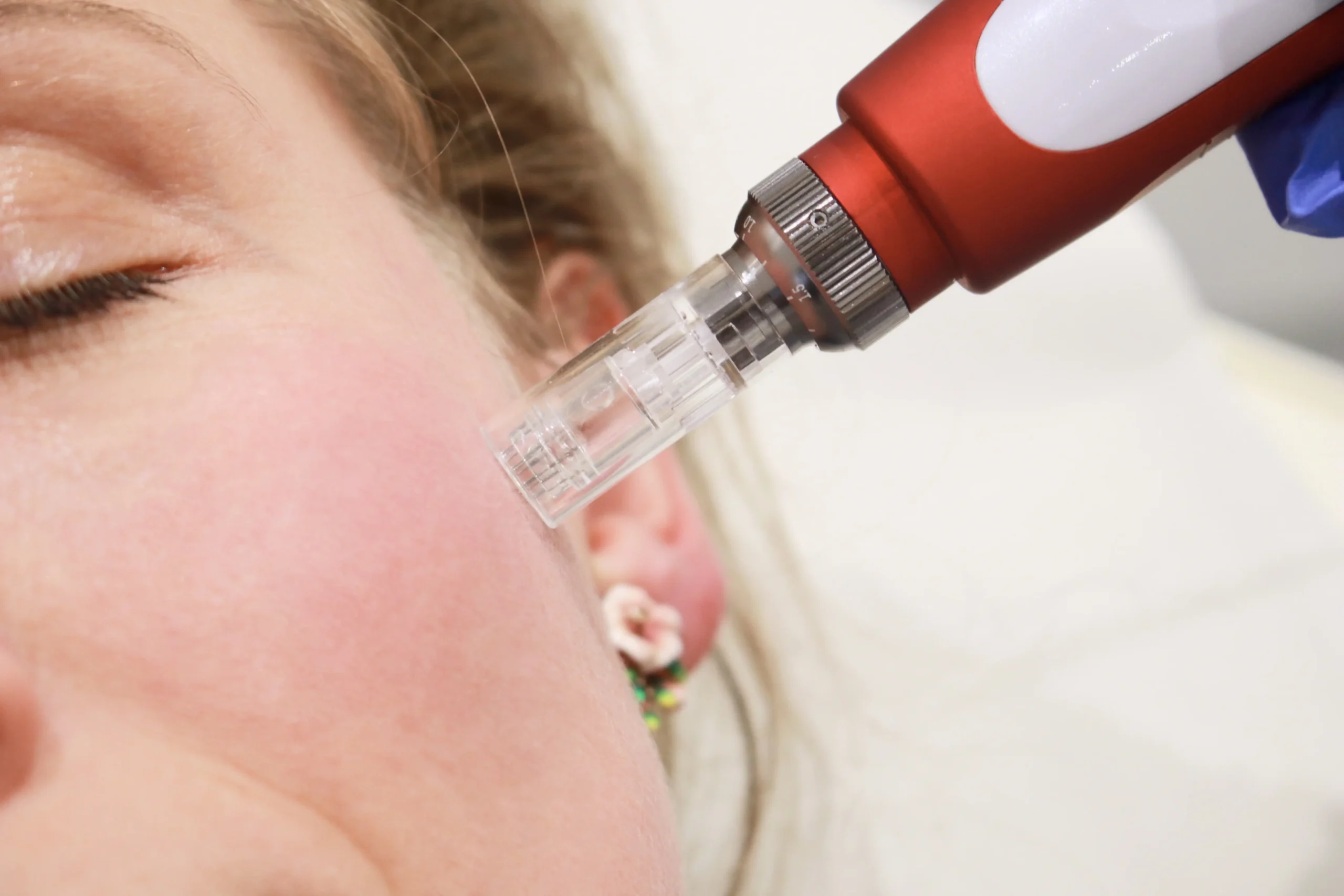SKIN CONCERNS
What is Rough Skin?
Rough skin texture refers to a skin surface that feels uneven or coarse to the touch. This common skin concern can result from various factors, including dryness, dead skin cell accumulation, sun damage, and lack of hydration. It often lacks the smooth, soft feel of healthy skin.
skin concerns
What is Rough Skin Texture?
Rough skin texture is a prevalent skin concern characterized by an uneven, coarse feel to the skin's surface, deviating from the smooth, supple texture associated with healthy skin. At FTT Skin Clinics, we understand that dealing with rough skin texture can be frustrating, as it not only affects the skin's appearance, making it look dull and aged but also impacts how it feels to the touch.
Several factors contribute to rough skin texture. Environmental influences like exposure to the sun and extreme weather conditions can strip the skin of its natural moisture, leading to dryness and flakiness. Aging is another key factor; as we age, our skin's natural exfoliation process slows down, resulting in the accumulation of dead skin cells on the surface. This accumulation contributes to a rough and uneven texture. Additionally, lifestyle choices, such as poor hydration and nutrition, can exacerbate the issue, depriving the skin of essential nutrients and moisture it needs to remain smooth and vibrant.


skin concerns
Are you affected?
If you're struggling with rough skin texture, you're not alone, and help is available. FTT Skin Clinics is committed to helping you achieve the best version of your skin. Let us guide you toward a smoother, more luminous complexion. Our expert team is dedicated to diagnosing the underlying causes of your skin concern, utilizing advanced skin analysis techniques to tailor a treatment plan that suits your unique skin needs.
Symptoms
Rough skin texture is characterized by a variety of symptoms that can affect the overall look and feel of your skin. When you touch your skin, it may feel bumpy or irregular, a condition often resulting from the accumulation of dead skin cells on the surface, which disrupts the skin’s smooth texture. Dryness is another common symptom, where the skin appears flaky or scaly due to a lack of moisture. This can be caused by not drinking enough water or not moisturizing properly, stripping the skin of its essential oils. Additionally, a dull appearance is a sign of rough skin texture, with the skin lacking radiance and seeming lifeless, often because dead skin cells block light reflection. Enlarged or visible pores can also indicate rough texture, as excess oil and debris stretch the pores. Lastly, flakiness, characterized by small, dry patches or scales, signals rough texture often due to extreme dryness or irritation.
-
Environmental Factors
Sun Exposure: Prolonged exposure to UV rays can damage the skin, leading to dryness and premature aging, which contributes to a rougher texture. Climate Conditions: Extreme weather conditions, such as cold and dry winter air or hot and humid summer weather, can deplete the skin’s moisture, exacerbating roughness. Pollution: Airborne pollutants can penetrate the skin, causing oxidative stress that breaks down collagen and elastin, leading to a rough and aged appearance.
-
Physiological Factors
Aging: As we age, our skin’s natural exfoliation process slows down, and the production of collagen decreases, leading to drier, less elastic skin prone to roughness.
Genetic Predisposition: Some individuals may be genetically inclined to have drier or thicker skin, which can naturally exhibit a rougher texture. Hormonal Changes: Fluctuations in hormones, especially during puberty, pregnancy, or menopause, can affect oil production and skin cell turnover, impacting skin texture.



Frequently Asked Questions
What causes rough skin texture?
Rough skin texture can be caused by a variety of factors, including environmental damage, aging, poor skincare habits, and certain skin conditions. It’s often a result of dehydration, accumulation of dead skin cells, or reduced collagen production.
Can diet affect my skin texture?
Yes, your diet plays a crucial role in maintaining smooth skin. Diets rich in antioxidants, healthy fats, and vitamins can improve skin health, while processed foods and sugars might contribute to roughness and other skin issues.
How can I improve my skin texture at home?
Regular gentle exfoliation, consistent hydration, using products with active ingredients like retinol or vitamin C, and protecting your skin from sun damage can significantly improve skin texture.
Is exfoliation necessary for treating rough skin?
Yes, exfoliation helps remove dead skin cells that can make your skin feel rough. However, it’s important to choose a method that suits your skin type to avoid irritation.
How often should I exfoliate my skin?
This depends on your skin type and the exfoliation method. Generally, once or twice a week is sufficient for most skin types. Over-exfoliating can damage the skin barrier and worsen texture.
Can rough skin texture be a sign of aging?
Yes, as skin ages, it loses elasticity and the ability to retain moisture, leading to a rougher texture. Reduced cell turnover also contributes to accumulated dead skin cells.
Do I need to see a dermatologist for rough skin texture?
If your rough skin texture is persistent and doesn’t improve with at-home care, it’s a good idea to consult a dermatologist. They can identify underlying causes and recommend treatments.
Can hydration improve skin texture?
Absolutely. Hydrated skin is plumper, smoother, and has a healthier barrier function. Drinking plenty of water and using hydrating skincare products can improve texture.
What professional treatments are available for rough skin texture?
Professional treatments like chemical peels, microdermabrasion, and laser therapy can improve skin texture by promoting cell turnover and collagen production.
How can I prevent rough skin texture?
Preventing rough skin texture involves protecting your skin from the sun, avoiding harsh skincare products, staying hydrated, eating a balanced diet, and maintaining a consistent skincare routine.

Rough Skin Myths
Myth: Only dry skin can have a rough texture.
While dry skin is more prone to roughness due to lack of moisture, other skin types can also experience rough texture. Oily skin can suffer from texture issues due to excess sebum and dead skin cells leading to clogged pores and uneven skin. Combination and normal skin types are not immune to texture concerns, which can arise from external factors like environmental damage or inadequate skincare routines.
Myth: More exfoliation means smoother skin.
Over-exfoliation can strip the skin of its natural oils, leading to irritation, sensitivity, and even more texture issues. It’s important to exfoliate appropriately for your skin type and not overdo it. Gentle exfoliation a couple of times a week is usually sufficient for most skin types.
Myth: Drinking water is all you need to fix rough skin texture.
While staying hydrated is crucial for overall health and can help maintain skin hydration, it’s not a standalone cure for rough skin texture. A comprehensive skincare routine tailored to your skin’s needs, including proper cleansing, moisturizing, and sun protection, is essential for addressing texture concerns.
Myth: You can’t wear makeup if you have rough skin texture.
You can still wear makeup if you have rough skin texture, but the key is to prepare the skin properly and choose products that won’t exacerbate the issue. Primers can smooth the skin’s surface, and non-comedogenic, hydrating formulas can provide coverage without clogging pores or highlighting texture.
Myth: Rough skin texture will improve on its own without intervention.
While minor texture issues may improve with time, especially with natural cell turnover, more pronounced texture concerns often require a targeted skincare approach. Using products with active ingredients that promote cell renewal and collagen production, and seeking professional treatments can significantly improve skin texture.
How Can We Help?
At FTT Skin Clinics, we understand how challenging living with rough skin texture can be, affecting not just your skin but also your confidence and well-being. Our dedicated team of skincare professionals is here to help with a range of effective treatments and personalized care plans designed to suit your unique skin type and concerns.
Obagi Blue Peel® is a medical grade skin peel treatment that can only be administered by highly trained nurses, dermatologists, doctors and dentists. The Obagi Blue peel® results in the removal of a thin layers of aged and damaged skin resulting in tightened, less wrinkled, more youthful, clear skin. The Obagi Blue Peel® uses Trichloracetic Acid (TCA) as the active ingredient mixed with the patented Blue Base from Obagi.
The OBAGI BLUE PEEL TCA is a specially formulated chemical peel designed to significantly improve the texture of the skin by removing the top damaged layers, promoting cell renewal. This treatment is effective in addressing rough skin texture caused by aging, sun damage, and environmental effects. The addition of blue dye by Dr. Obagi not only makes the application process safer but also allows for more consistent results by enabling precise control over the peel’s depth. This targeted removal of skin layers stimulates the natural healing process, leading to the production of new, smoother, and healthier skin cells.
At FTT Skin Clinics, we carefully assess each client’s skin condition and goals to determine if the OBAGI BLUE PEEL TCA is the most suitable treatment. The procedure involves applying the TCA solution, enhanced with a blue dye, to the affected areas. The blue dye acts as a guide, ensuring even application and depth of penetration for optimal results. Our skilled practitioners meticulously monitor the peel process to achieve the desired effect without compromising skin safety.
For clients with significant rough texture issues, the OBAGI BLUE PEEL TCA offers a potent solution that can achieve more dramatic improvements than over-the-counter products or less intensive treatments. Its ability to deeply exfoliate and rejuvenate the skin can result in a noticeably smoother, more refined skin texture. Additionally, this peel can be customized to suit different skin types and concerns, making it a versatile option for many clients.
While the OBAGI BLUE PEEL TCA is effective for improving skin texture, it’s not suitable for everyone. Individuals with certain skin conditions, sensitivity, or those who cannot commit to the post-peel care regimen may need to consider alternative treatments. Recovery time and potential for peeling and redness immediately following the treatment are important factors to discuss during the consultation. FTT Skin Clinics prioritizes patient education and safety, ensuring that clients are fully informed of all aspects of their chosen treatment.
Choosing the OBAGI BLUE PEEL TCA at FTT Skin Clinics means opting for a professional, carefully managed approach to improving rough skin texture. With our expertise and commitment to client care, we strive to achieve the best possible outcomes, helping you reveal smoother, healthier-looking skin.

Treatment Time
60 Minutes
Visible Results
1 Week
Full Recovery
1 Week
Duration
1 Year
Sensitivity Time
10 Days
Anaesthetic
Topical & Oral
Back to Work
24 Hours
No. of Treatments
Yearly
Whether you call it dermal needling, collagen induction therapy, or microneedling, there’s one thing for sure all our FTT Skin Clinics staff have the most information, knowledge and expertise on the science behind one of the industry’s hottest trends, as well how to safely get results having been taught by Dr. Lance Setterfield, renowned author and one of the world’s foremost Microneedling experts.
Microneedling is a minimally invasive procedure that targets rough skin texture by promoting the skin’s natural healing process. It involves using fine needles to create micro-injuries in the skin, which stimulates collagen and elastin production. This increase in collagen can smooth out the skin’s surface, reducing the appearance of rough texture, scars, and even fine lines. The procedure effectively rejuvenates the skin from within, leading to a smoother, more youthful appearance.
At FTT Skin Clinics, our approach to microneedling begins with a thorough skin assessment to determine if it’s the right treatment for your specific concerns. During the procedure, a professional-grade microneedling device is used to ensure precise control and uniformity in creating micro-injuries. We focus on areas of concern, adjusting the needle depth according to the skin’s condition and the treatment goals. Our skilled practitioners are meticulous in their technique, aiming for the best results with minimal discomfort.
For clients struggling with rough skin texture, microneedling offers a compelling solution due to its ability to naturally regenerate and repair the skin. Unlike some chemical peels or laser treatments, microneedling is suitable for all skin types, including those with sensitive skin. Its ability to enhance the effectiveness of topical treatments—by increasing their penetration into the skin—further supports the skin’s rejuvenation process.
While microneedling is widely beneficial, it’s not without its considerations. The treatment requires a short downtime, with potential redness and sensitivity post-procedure. It’s crucial for clients to follow a post-care regimen and protect their skin from the sun to ensure optimal healing and results. Those with active acne or certain skin conditions may need to wait until their skin clears or consider alternative treatments. At FTT Skin Clinics, we provide comprehensive pre- and post-treatment care instructions to ensure your skin heals beautifully and achieves the desired smoother texture.
Opting for microneedling at FTT Skin Clinics means choosing a treatment backed by a deep understanding of skin biology and healing processes. Our commitment to delivering personalized care ensures that every client receives a treatment plan tailored to their unique skin needs, paving the way for smoother, more radiant skin.


Treatment Time
60 Minutes
Visible Results
1 Week
Full Recovery
24 Hours
Duration
Treatment Plan
Sensitivity Time
24 Hours
Anaesthetic
Topical
Back to Work
24 Hours
No. of Treatments
Quarterly
